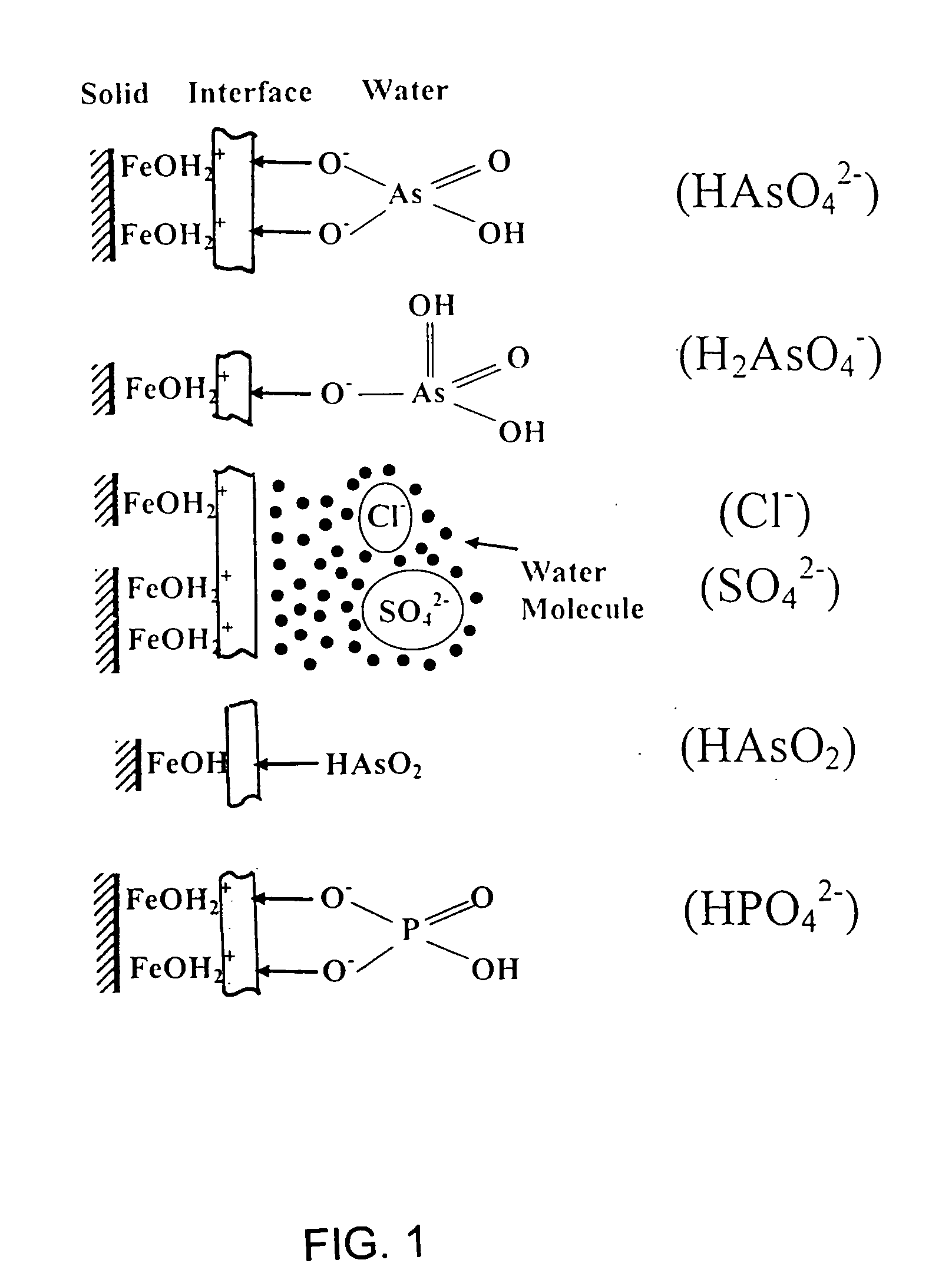Method of manufacture and use of hybrid anion exchanger for selective removal of contaminating ligands from fluids
- Summary
- Abstract
- Description
- Claims
- Application Information
AI Technical Summary
Benefits of technology
Problems solved by technology
Method used
Image
Examples
Embodiment Construction
[0039] Since Fe3+ and Fe2+ are cations, they are repelled by an anion exchanger's positively charged functional groups and cannot be loaded onto anion exchange resins. Thus, the technique, used previously for dispersing HFO particles within cation exchanger beads, is not applicable when anion exchanger beads serve as the host materials. We have discovered, however, that HFO particles can be supported in anion exchanger by a series of steps, a preferred example of which is as follows.
[0040] As a first step, Permanganate anion (MnO4−) is loaded onto an anion exchange resin (for example A-500P, an anion exchange resin with quaternary ammonium functional groups in chloride form, available from The Purolite Company of Bala Cynwyd, Pa.). The loading of the resin with permanganate anion is carried out by passing potassium permanganate solution (500 mg / L KMnO4) through the bed. This may be carried out, for example by passing a 500 mg / L KMnO4 solution through the bed to achieve the followin...
PUM
 Login to View More
Login to View More Abstract
Description
Claims
Application Information
 Login to View More
Login to View More - R&D
- Intellectual Property
- Life Sciences
- Materials
- Tech Scout
- Unparalleled Data Quality
- Higher Quality Content
- 60% Fewer Hallucinations
Browse by: Latest US Patents, China's latest patents, Technical Efficacy Thesaurus, Application Domain, Technology Topic, Popular Technical Reports.
© 2025 PatSnap. All rights reserved.Legal|Privacy policy|Modern Slavery Act Transparency Statement|Sitemap|About US| Contact US: help@patsnap.com



